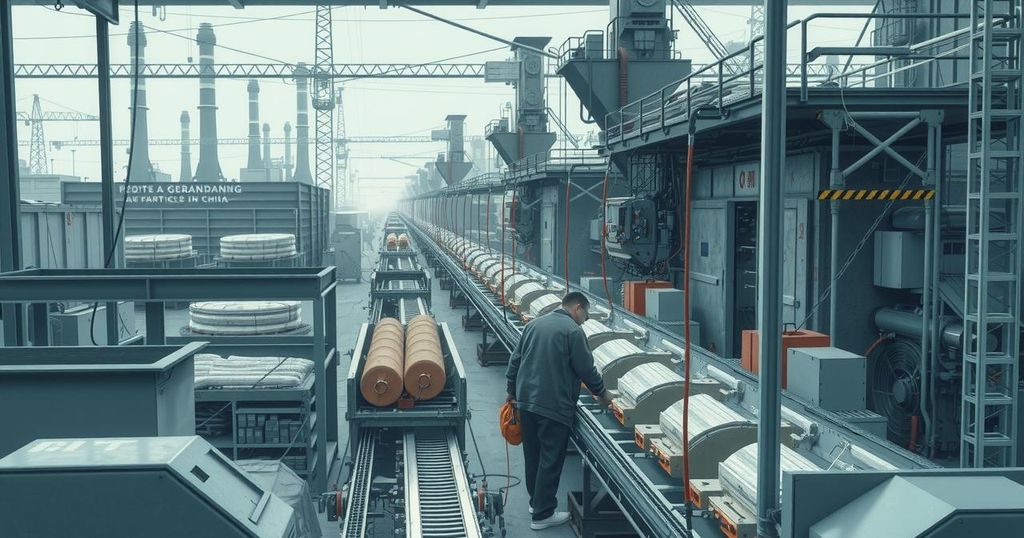The Impact of U.S. Tariffs on China’s Economy: A Struggling Landscape
China’s economy struggles from high unemployment and reliance on low-wage labor, worsened by U.S. tariffs on Chinese exports. The Guangdong province, crucial for manufacturing, is feeling the impact with significant drops in orders. Factories and smaller workshops are seeking new markets to survive amid these challenges, while China’s leadership is concerned about stability and potential economic shocks.
China’s economy faces significant challenges as it experiences a slowdown in growth, high youth unemployment, and a reliance on low-wage migrant workers. Particularly affected are the factories in Guangdong, the province often referred to as the “engine room” of China’s manufacturing. The tariffs imposed by former U.S. President Donald Trump directly impact these factories, where many consumer goods are manufactured. As of March 4, 2025, all products exported to the U.S. from China are subject to tariffs starting at 20%.
One factory owner, Johnny Pan, reports a drastic decline in orders amounting to millions of dollars due to these tariffs. His business, which has operated since the 1990s, primarily exports appliances to the U.S., and he is now exploring new markets overseas. Smaller workshops in the region are in an even more precarious position, as they often specialize in niche functions and lack the leverage to raise prices, risking livelihoods amid decreasing income.
With exports comprising 20% of China’s GDP, the potential for widespread economic shock looms large. The country is already grappling with diminishing growth, and increased youth unemployment exacerbates the situation. While the Chinese government has adopted a restrained response to the tariffs, signaling an understanding of the economic stakes, stability remains their paramount concern. The trade war that began in 2016 has already reduced China’s export volume to the U.S., but the current economic landscape remains fragile as both China and the U.S. navigate this complex geopolitical relationship.
Overall, the current state of tariffs is merely a symptom of broader global tensions between superpowers, both determined to maintain their influence in an evolving world order. Despite its formidable economic position, China is unlikely to simply accept these challenges without a proactive response, as its leaders prioritize stability and growth.
In summary, China’s economy is currently navigating a complex landscape shaped by tariffs imposed by the United States, resulting in significant impacts on manufacturers, particularly in Guangdong province. With rising tariffs leading to decreased orders and financial strain, both large and small operations are compelled to seek new markets. The overarching concern for China’s leadership revolves around potential economic instability amidst high youth unemployment and a sluggish growth rate, highlighting the intricate interplay between tariffs and global power dynamics.
Original Source: news.sky.com




Post Comment